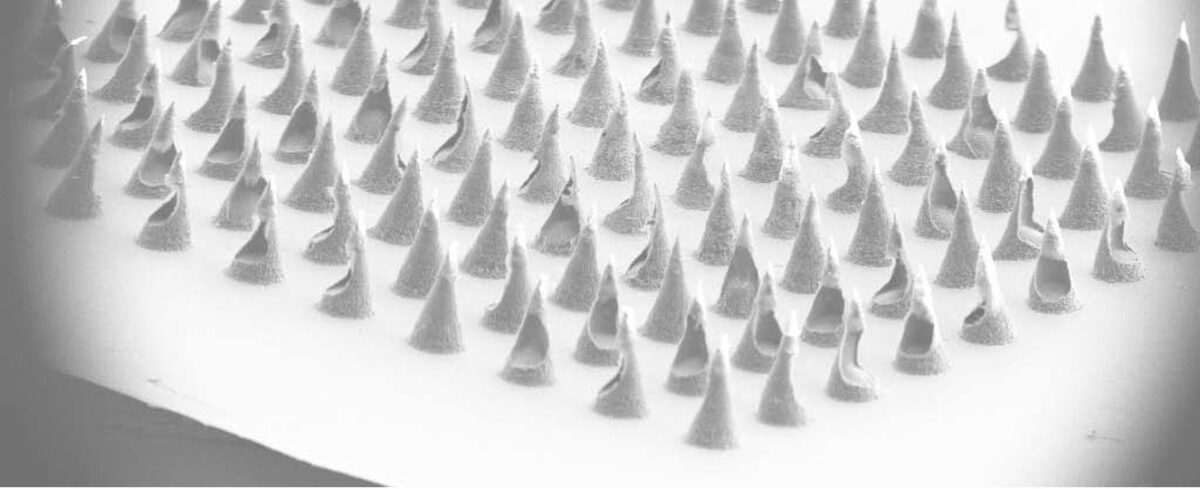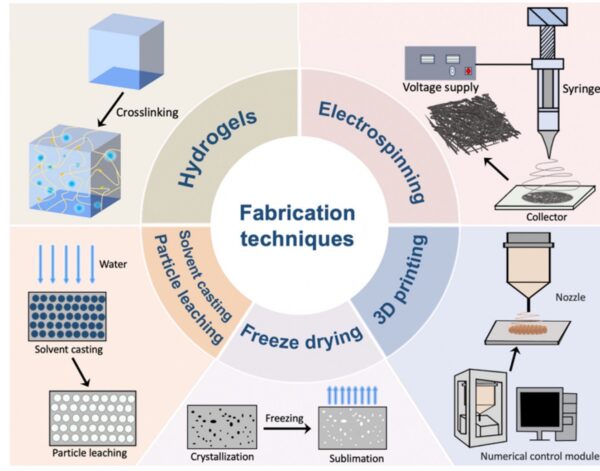3D Printing, Hydrogels, and Polymers in Modern Wound Care

Polymers are transforming skin therapy from structural roles to active agents in healing and targeted drug delivery.
In the growing field of biomedical innovation, plastics are stepping beyond traditional roles. They are no longer just structural materials or packaging; they are becoming active players in healthcare, particularly in treating skin diseases and wound care. Appropriate wound dressings can help to facilitate the repair and healing rate of defective skin. The shift toward topical drug delivery systems has opened new avenues for the plastics industry. Researchers are turning to polymer-based biomaterials to develop more innovative, more effective ways to deliver drugs directly to the skin.
You can also read: Hydrogels in Drug Delivery: Smart Carriers for Targeted Therapies.
Plastics Become Drug Carriers
While natural polymer biomaterials like collagen and hyaluronic acid have excellent biocompatibility and promote wound healing, their low mechanical properties and fast degradation rates have limited their broader applications. Skin wound dressings based on biodegradable and biocompatible synthetic polymers, such as polyvinyl alcohol (PVA), polycaprolactone (PCL), polylactic acid (PLA), poly(lactic-co-glycolic acid) (PLGA), polyurethane (PU), and polyethylene oxide/polyethylene glycol (PEO/PEG), can overcome these shortcomings.
For example, polyurethane films can serve as breathable wound dressings that release antimicrobial agents directly onto the skin. Researchers are creating PLA nanofibers, produced by electrospinning, to function as scaffolds that deliver drugs and promote tissue regeneration.
Material Properties Matter
What makes plastics particularly suitable for these advanced drug delivery systems? The answer lies in their versatility and tunability. Designers adjust polymer properties to control mechanical strength, degradation rates, porosity, and surface chemistry. This flexibility lets them decide how to load, store, and release drugs according to specific therapeutic needs.
Hydrogels made from PVA or PEG swell to absorb wound exudates while slowly delivering therapeutic agents. Researchers design microneedle arrays from biodegradable plastics like PCL that penetrate the skin and dissolve, leaving no medical waste behind. Additionally, smart polymers respond to temperature, pH, or moisture, triggering drug release precisely when needed. These features position plastics as key enablers of next-generation drug delivery technologies.
Manufacturing Techniques for Polymer-Based Systems

Fabrication Techniques for Skin Scaffolds.Courtesy of Recent Advances in Biodegradable and Biocompatible Synthetic Polymers Used in Skin Wound Healing.
Researchers employ various techniques to construct skin scaffolds using synthetic biodegradable polymers. The choice of method depends on the specific application, and sometimes they combine multiple methods to achieve diverse functionalities.
- Hydrogel Formation
This technique forms 3D networks of hydrophilic polymers that provide a stable, moist wound healing environment. Methods include template, 3D printing, solvent casting, and self-assembly, allowing tuning of mechanical and degradable properties.
- Electrospinning
Uses electrical charges to create continuous nanofiber structures that mimic the skin’s extracellular matrix. These nanofibers offer large surface areas for air exchange and bacterial prevention, with tunable parameters for cell adhesion.
- Freeze Drying
A low-temperature process that removes solvent via sublimation, creating porous scaffolds with customizable pore structures and drug loading capabilities.
- Solvent Casting/Particle Leaching
This method creates porous structures. It works by dissolving particles within a polymer solution. Researchers can control the size and number of pores by changing the particles. This makes the method good for creating skin tissue.
- Three-Dimensional Printing
This technique builds custom 3D objects layer by layer. It uses digital models and special biocompatible inks. This allows for the creation of skin scaffolds specifically designed for each patient’s injury.
Engineering Plastics for Biomedical Performance
The success of polymer-based drug delivery systems depends on precise control over material properties, and this is where plastics engineering plays a critical role.
In topical applications, polymers must balance multiple functions:
- Mechanical Integrity
Films and patches require tensile strength and flexibility to conform to the skin without breaking or peeling. TPUs and elastomeric polyesters serve these applications well because of their stretchability and durability.
- Controlled Permeability
Some systems need to allow oxygen and moisture exchange while retaining the drug. Engineers achieve this by adjusting polymer crystallinity, crosslink density, or blending hydrophobic and hydrophilic components. For instance, combining PEO with PLA can fine-tune permeability in nanofiber mats.
- Drug Loading and Release Kinetics
The polymer matrix must accommodate both hydrophilic and hydrophobic drugs, often requiring surface modification or copolymerization. Techniques like grafting polyethylene glycol chains onto hydrophobic backbones can improve drug compatibility and diffusion control. Furthermore, the incorporation of bioactive compounds such as antibacterial agents, growth factors and herbal extracts can significantly improve the therapeutic effects of scaffolds in wound healing by prolonging the lifespan of these agents.
- Sterilizability and Stability
Medical plastics must endure sterilization methods like gamma irradiation or ethylene oxide treatment. They must do this without harming the drug or losing material strength. This demands careful selection of polymer grades and stabilizer packages.
These requirements push plastics innovation beyond standard formulations. Custom polymer synthesis, copolymer design, and advanced compounding techniques are essential for developing biomedical plastics.
Sustainability and Biocompatibility
One of the most exciting aspects of polymer-based systems is their potential for biodegradability and sustainability. Materials like PLA and PCL degrade naturally in the body, reducing the need for surgical removal and minimizing environmental impact when compared to traditional medical disposables.
For wound care, bioresorbable plastics offer a dual function since they act as temporary drug reservoirs and support tissue healing without leaving residues. This not only simplifies treatment protocols but also aligns with healthcare sustainability goals.
A Transformative Role for Plastics
Plastics have long been part of the medical landscape in the form of syringes, tubing, and device housing. But today, they are taking on a transformative role in drug delivery systems, particularly for skin-related therapies. By designing polymers that interact actively with biological tissues, whether through controlled release, bioadhesion, or biodegradation, the plastics industry is helping shape the future of medicine.
Read the full text here: Recent Advances in Biodegradable and Biocompatible Synthetic Polymers Used in Skin Wound Healing.
